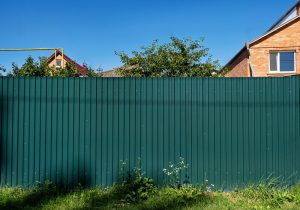How Long Does the Mold Removal Process Usually Take?

When we discover mold lurking in the corners of our homes, it’s natural to want it gone, like yesterday. It can cause an understandable amount of concern, especially with all the talk about the health risks associated with mold exposure. So, it’s no surprise that one of the first questions that pop up is: “How long is this mold removal process going to take?” Well, sit back and let’s unfold this story together because, like any good tale, the answer is not as straightforward as we might hope, but it’s definitely interesting.
Typical Duration of the Mold Removal Process
The truth is the time it takes to get rid of mold can vary quite a bit. It’s a bit like asking, “How long does it take to fix a car?” It depends on the car’s model, what’s wrong with it, and who’s doing the fixing. However, to offer you a ballpark, most mold removal can take anywhere from a day to a week. But let’s look deeper and understand what influences this timing.
Factors That Affect Mold Removal Time
Several factors can impact how long mold remediation takes, and here are a few of the main players:
1. Extent of Mold Growth
-
If it’s just a small patch of mold, we could be looking at a quick fix that can be completed within a day.
-
For moderate levels of mold, it might take a couple of days to remove and clean the affected areas properly.
-
But if we’re talking about a mold invasion where it’s spread across large areas or multiple spaces, buckle up because this could require up to a week of work.
2. Type of Surfaces Affected
-
Non-porous materials like metals and plastics can be easier and quicker to clean.
-
Porous surfaces, such as wood and drywall, can be tough customers. These might need to be removed and replaced, adding time to the project.
3. Mold Severity
-
A light surface mold situation is a relatively quick fix, often resolved within a day.
-
Severe cases where the mold has penetrated deeper into materials could extend the process to several days, especially if we need to wait for new materials to be installed and dried.
4. Availability of Professionals
-
Timing also depends on how quickly the professionals can get to you. Mold remediation experts are often in high demand.
-
Scheduling can add additional days to the overall timeframe before the removal process can even begin.
The Step-by-Step Mold Remediation Process
To give you a better sense of what happens during mold removal, here’s a rundown of the steps involved:
1. Inspection and Assessment
-
First things first, we need a mold assessment. Depending on the situation, this could take a few hours or longer.
-
Professionals will survey your space, sometimes with the help of mold testing Ottawa services, if they need to identify the mold type or spore concentration.
2. Containment and Control
-
Next is containing the spread. This involves sealing off the affected area and, depending on its complexity, could take a few hours.
3. Filtering the Air
-
Professional-grade air filters work to capture airborne mold spores. This is generally a background process that runs concurrently with other remediation steps.
4. Removing the Mold
-
Now for the main event, the removal itself. As we mentioned earlier, the duration of this stage can vary greatly depending on the severity and type of mold.
5. Cleaning and Disinfecting
-
Once the mold is removed, a thorough clean-up is required. This involves disinfecting the area and can last anywhere from a few hours to a day.
6. Restoration and Repair
-
Depending on what needs to be removed (like drywall or flooring), repair work may be necessary. This step could add additional days to the overall timeframe.
Mold Remediation vs. Mold Removal
Understanding the difference between mold remediation and mold removal is essential:
-
Mold Removal: The process of physically eliminating mold which is nearly impossible because mold spores are ubiquitous.
-
Mold Remediation: This aims to return mold levels to normal and naturally occurring levels, focusing on controlling and fixing the source of moisture.
Why Quick Mold Removal Is Essential
Regardless of timeframes, it’s crucial to address mold issues promptly due to:
-
Health risks, especially to those with allergies and respiratory issues.
-
There is a potential for structural damage to your property over time.
Preventing Future Mold Growth
Once the mold is out, you’ll want to keep it out. Prevention steps include:
-
Controlling humidity levels.
-
Ensuring proper ventilation.
-
Addressing leaks and water intrusion issues promptly.
Why DIY May Not Be the Way to Go
While small mold patches can sometimes be handled without professional help, larger or hidden mold problems should be left to the pros. They have the right tools, training, and experience to handle them safely and thoroughly.
Post-Remediation Testing
After the job is done, it’s a good idea to test the air quality to ensure the disaster restoration Ottawa process was successful. This can be done immediately following the remediation and may take a few hours to complete. When you spot mold at home, it’s normal to feel a mix of urgency and dread about how long it will take to handle. While the timing can swing from a straightforward one-day job to an intricate week-long process, knowing what to expect can help you plan and prepare for the road ahead.
Final Thoughts
Remember, patience is critical, and speed should never compromise the quality and thoroughness of mold removal. Trusting in experienced professionals to manage the task ensures that not only will the mold be addressed efficiently but also that your home and health are being safeguarded for the long term.


